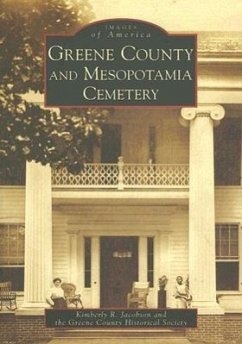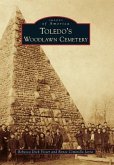The lovingly restored homes of many Eutaw citizens now laid to rest at Mesopotamia Cemetery depict the grace of the antebellum South. First known as Oak Hill Cemetery, Mesopotamia Cemetery was established around 1822 on present-day Mesopotamia Street. Eutaw, the seat of Greene County, boasts 50 structures listed on the National Register of Historic Places, with many more eligible for nomination. Greene was the most populous county in Alabama in 1850 and was widely regarded for its thriving and elegant communities. Greene County and Mesopotamia Cemetery ties the beautifully carved marble tombstones in the Mesopotamia Cemetery to the extraordinary people who have shaped Greene County's history.
Hinweis: Dieser Artikel kann nur an eine deutsche Lieferadresse ausgeliefert werden.
Hinweis: Dieser Artikel kann nur an eine deutsche Lieferadresse ausgeliefert werden.








